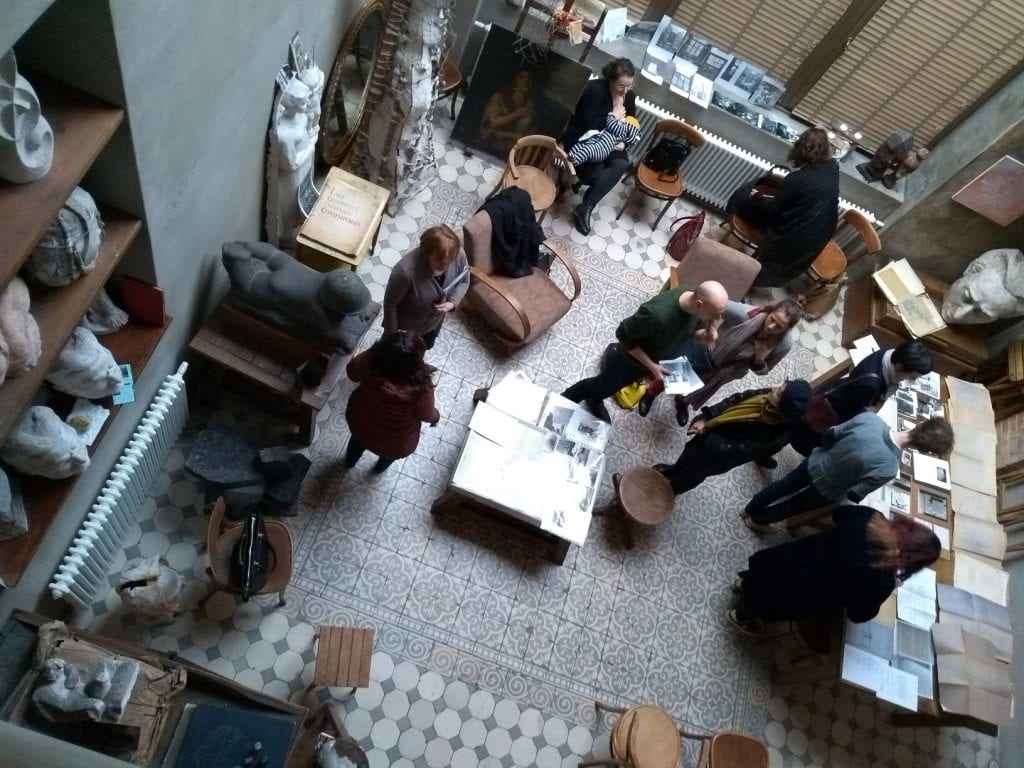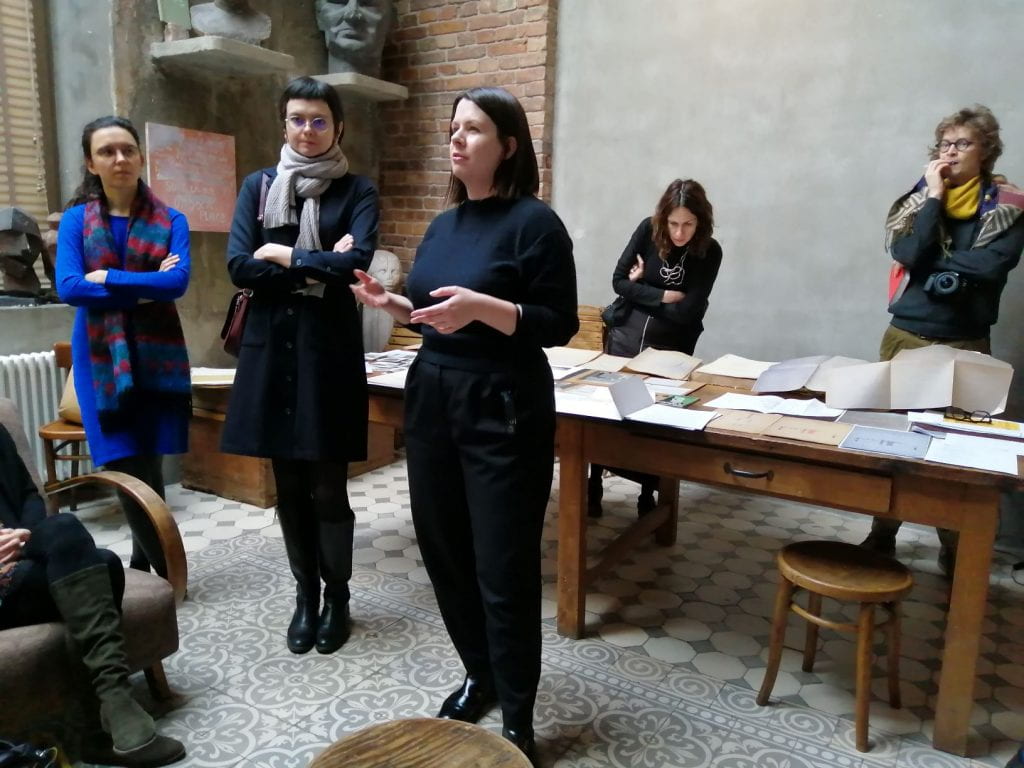Karol Tchorek’s studio
By editorial, on 3 March 2020
Magdalena Moskalewicz
On Tuesday afternoon, we visited the workspace of the late sculptor Karol Tchorek (1904-1985) and his son Mariusz, a known art critic and co-founder of Galeria Foksal, who died in 2004. The space is currently under the care of Mariusz’s widow, the British artist Katy Bentall—hence the current name, the Tchorek-Bentall studio— and is the only artist’s studio in Warsaw with the official status of a heritage site, which means it is under the protection of the city conservator.
An established sculptor already in the mid-war period—he received the silver medal at the 1937 World Exhibition in Paris—Karol Tchorek moved into this location in the early 1950s. This is when the previous building he had occupied, and where he’d run an art dealership called “Nike’s Salon” during the War, had been torn down to make space for the Stalinist rebuilding of Warsaw. Tchorek effectively built the studio, which is attached to the back of a nineteenth-century tenement building, beginning with the tiled floor he moved from the Salon, and created the unique atmosphere that it has till today. When we visited, the floor-to-ceiling window shone winter light directly on the decorative tiles and the multiple sculptures that populated the room in all its niches and corners. Other artifacts, documents, and photographs as well as historical furniture both added to the impression of an active, creative space and simultaneously provided a historical narrative about the studio and its residents.
Hosted by the custodians of the studio, Renata Wagner and her daughter Agnieszka, our group engaged in a conversation about the rebuilding of Warsaw in the aftermath of the World War II and Karol Tchorek’s involvement in it (the artist authored, among others, the iconic figure of mother and child at MDM, Warsaw’s Stalinist residential-commercial district); about the significance of the “General Theory of Place” co-authored by Mariusz Tchorek with other members of Galeria Foksal in 1966; and about today’s status of the historical sites like this one, when reprivatization and neoliberal policies in urban planning remove many of them from the Warsaw city map.
One Response to “Karol Tchorek’s studio”
- 1
 Close
Close





Dear Magdalena Moskalewicz,
For an accurate discussion of the studio, its collection and the roles played by various actors associated with Tchorek-Bentall Studio, may I refer you to ‘A Warsaw Address: a dossier on 36, Smolna Street’, in The Journal of Architecture, Volume 15, Number 1, February 2010: 7-38. You could also consult Ella Chmielewska, ‘Pamiec miejsca. Tablice, archiwum, pracownia.’ in Figury retoryczne, Warszawska Rzezba Architectoniczna, 1918-1970. Warszawa: MN Krolikarnia, 2015: 81-108.
Kind regards,
Ella Chmielewska